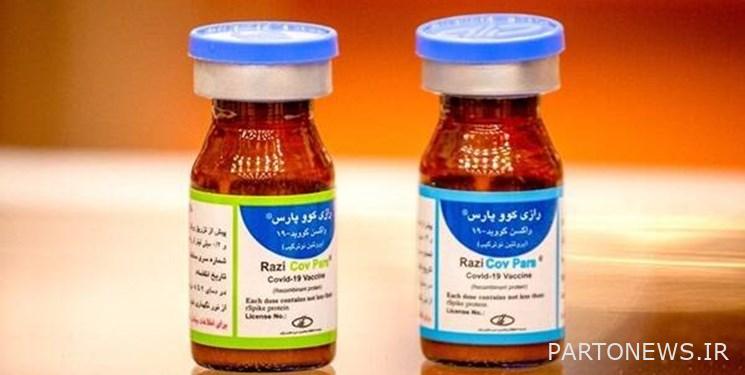
According to Fars News Agency’s health correspondent, Mohammad Hossein Fallah Mehr, deputy director of research and spokesman for the Razi Koopars vaccine production project on the Jam Sarsi Persian program of Jam Jam Network, said: “There are two important vaccination centers in Iran with a century of experience. The first center is Pasteur.” It was formed in 1299 to control cholera and also produced diphtheria and smallpox vaccines. After that, the Razi Institute was established to control bovine plague, and then we turned to human vaccines to control viruses among humans.
He added: “Currently, the two main vaccines in the country, namely tuberculosis and hepatitis, are produced at the Pasteur Institute; Razi Vaccine and Serum Research Institute currently produces 7 out of 10 mandatory vaccines in the country. Type 2 hepatitis has been completely eradicated with the help of Razi Institute vaccines.
Fallah Mehr stated: The polio vaccine and medical infections are also produced in this institute. There is no cure for polio, and we are in an area where we have reports of the disease in neighboring countries due to health problems in neighboring countries, and we inject the vaccine into people around our borders.
The deputy director of research and the spokesperson of the Rupi vaccine production project, Koupars, added: The measles, rubella and mumps vaccine has also been produced by Razi products and this disease has been controlled. Two diphtheria and tetanus bacterial vaccines are produced by this center and are used in both children and adults.
He added: “We produce two anti-serum products for snake bites and scorpion bites; Because Iran is the second country in terms of snakes and scorpions. We have about 100,000 reports of bites annually, which prevent the occurrence of bad events after the bite by using secret products.
Fallah Mehr continued: “Simultaneously with the start of Corona in the world, this institute has started vaccination and now Kovopars Razi vaccine has entered the third phase of tests. We hope to inform the Ministry of Health about the results in this field in the next two weeks in order to obtain a license.”
He said: “The schedule for making the vaccine is divided into two parts, before the corona and after the corona, according to the instructions of the World Health Organization and the instructions that followed in our country.”
“Before Corona, each vaccine was completed for an average of 5 to 10 years, with 2 to 3 years of preclinical and animal studies and immunogenicity in the animal,” said Razi Koopars, deputy research director and spokesman for the vaccine production project. After one year, the vaccine entered phase one studies in a population of less than 100 people, followed by a second phase for immunization.
He added: “In the end, the effectiveness of the vaccines was tested for two to three years, but after the outbreak of corona, according to what happened in the world, the World Health Organization issued an instruction that all this work should be done in parallel.”
He introduced the preclinical phase, phases one, two and three of the vaccine production stages and added: in the new process of the World Health Organization, if there is no problem in the preclinical phase between three to six months, phase one will start in parallel. After two months, we start phase two and then the third phase. This process takes at least six to nine months, and all studies are done in parallel to save time.
“The first people who received the vaccine in the first phase will be examined and monitored until the end of the studies in the third phase. After all these processes, the vaccine will enter the emergency phase,” said Razi Koopars, deputy research director and spokesman for the vaccine production project. Receives permission for this injection.
He added: “Two years have passed since this issue and most of the available vaccines have gone through the same process. The coronary lesions we see, such as mental, gastrointestinal, renal, and pulmonary lesions, are far greater than the side effects that the vaccine may cause in a small population.
Fallah Mehr stated: “It is said that the emergency permit is issued because the permit is issued in a situation where the situation of the countries is in critical condition and in the current situation due to the economic, cultural and political problems caused by the corona in a critical situation.” Created; For this reason, it has been licensed for emergency use.
Razi Koopars, deputy research director and spokesman for the vaccine production project, added: “This is while many companies that have been able to pass the study phases properly have received public injection licenses and their licenses have been taken out of emergency.” None of the vaccines in the world in these two years have had serious side effects so far.
“In countries where the vaccine has been injected and returned to normal, it is not comparable to the side effects of the vaccine if we look at the state of coronary mortality,” he said. For this reason, most countries have vaccinated 70% of their population twice and are looking for a third time to cope with different variants of the virus.
A spokesman for the Razi Koopars vaccine production project said: “Usually, by injecting two doses of the vaccine, relative safety is created against similar variants.” The first corona to be identified in the world was the Wuhan variant, and most vaccines are now based on the original Beijing strain.
“Currently, different vaccines provide 60 to 92 percent immunity against the main strain, but this number varies against the dominant strains in each country;” Coronaviruses are usually considered 60% for variants and vaccines. If the existing variant is 60% similar to the vaccine strain, there is no need to change the vaccine strain.
Pointing out that from the third dose onwards, the injection of the vaccine is called a booster dose, Fallah Mehr added: “Vaccines have an immunogenicity period that create a minimum of relative immunity.”
He added: “Studies have predicted between 6 and 9 months in different vaccines and with a booster dose that is injected six to nine months after the second dose can provide relative safety.”
“Whether vaccination will continue in the coming years or not depends on the circumstances and it is not clear,” said Razi Koopars, deputy research director and spokesman for the vaccine production project. Like the flu vaccine, people with weakened immune systems who are at high risk for the disease may be vaccinated at least once a year.
“Some vaccines are 100% immunogenic and, if used properly, can produce definitive immunogenicity, such as the polio vaccine,” said a spokesman for the Rovi Kopars vaccine production project. Some vaccines have less of this immunogenicity, depending on the type of bacteria and virus.
“The corona virus, because its variants are different and variable, can not be assured, but it is not the case with polio or measles,” he said. It depends on the nature of the crime whether it is changeable or not.
Fallah Mehr said: “Vaccines are considered a high technology and countries do not easily provide its production technology to others.” Fortunately, this technology has become indigenous over the past century, and we produce most of the vaccines we need in the country.
Deputy Minister of Research and Spokesperson of Razi Koopars Vaccine Production Project said: About 16 human vaccines, which are the most important vaccines needed in the country, are produced domestically, and most of them have controlled the disease in the country. At present, the knowledge of producing these vaccines has also become indigenous.
He said: “In the process of vaccine production, the discussion of vaccine design and production plan, vaccine formula layout and implementation, industrial production and quality control evaluations are discussed. This chain is localized in our country and its knowledge is at the disposal of domestic scientists.”
Fallah Mehr pointed out: “Based on this existing technical knowledge, new vaccines are produced and there are few vaccines that are not produced in our country for special reasons, such as low consumption, non-mandatory and non-commercial population, and have been imported in recent years.” Has been. Corona contributed to this technology and the necessary infrastructure in the country.
“Several companies are producing vaccines that are in the stage of industrial production or clinical trials,” said Razi Koopars, deputy research director and spokesman for the vaccine production project. The first vaccine was Barakat, which was tested and industrially produced and given ten million doses to the Ministry of Health.
He continued: “The second vaccine is Pasteur, which was produced in cooperation with Cuba, one of the most important vaccine centers in the world, and 1.2 million doses have been provided to the Ministry of Health.” The next vaccine is Rovi Koopars, which we are now in the middle of the third phase of testing, and we have produced 5 million doses, and we hope that it will enter the vaccination chain in mid-November.
Fallah Mehr noted: The next vaccine is Fakhra, which will most likely enter the general vaccination chain by the end of November and will be a great help in producing vaccines for coronary heart disease and other diseases.
End of message /
.

